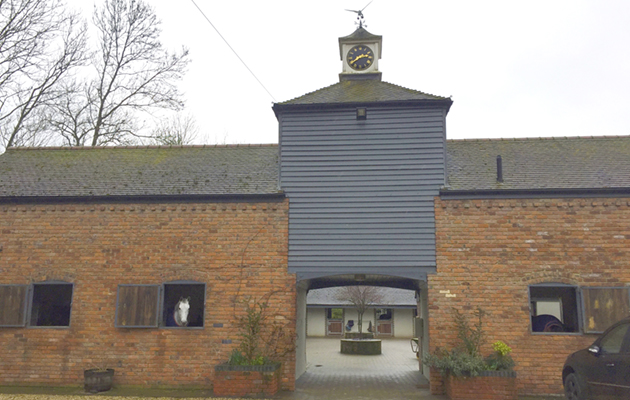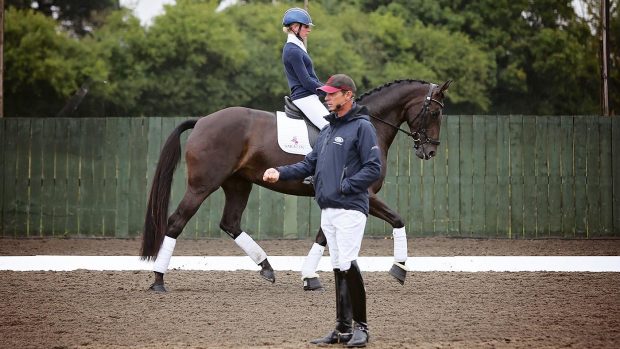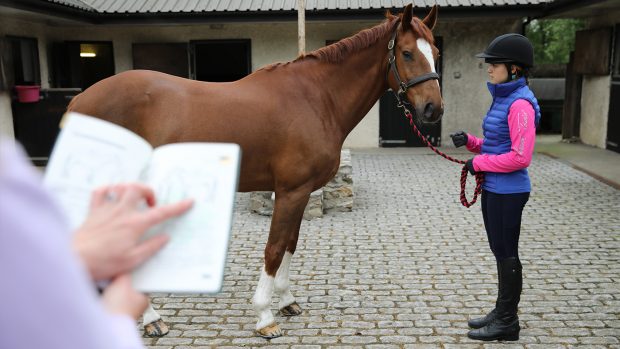Ever wondered what Carl Hester looks for when he’s hunting for his next grand prix star? In his masterclass with Van Olst Horses at the Equerry Bolesworth International Horse Show, Carl reveals six things to have on your list when you’re buying a horse for dressage — whatever the level.
1. Good natural balance and self-carriage
“There’s no point having a horse with a lovely trot and canter if they’re not in good balance,” says Carl, who uses young British grand prix rider Charlotte Fry and the five-year-old Inclusive (pictured above) as an excellent example of natural balance. “The importance of self-carriage applies across the levels — at any given moment you should be able to give and retake the reins and the horse stay on the bridle.”
2. A big walk — but not too big
“When buying a horse for dressage, or eventing, it has to have correct paces. Always buy a horse with a good walk, and avoid horses who ‘pace’ — when the left hindleg and the left front leg both move forward together,” says Carl. “The walk should be the easiest part of a test — it’s the bit you want for free! Look for an overtrack – that’s a good sign — but remember that too huge a walk often means it’s not easy to collect the horse in a good rhythm.”
3. Rhythm — the first scale of training
“You need a good basic working trot; the first thing in the scales of training is rhythm,” Carl points out. “Every step should be the same.”

4. The ‘look at me factor
“Not every horse has presence — that ‘look at me’ factor. Some horses are born with it, some learn to develop it, and some don’t,” says Carl, noting that Charlotte’s next demo ride, the grand prix breeding stallion Everdale, has presence in abundance.
Article continues below…
You might also be interested in:

Not just for trotting over: Michael Eilberg shares his innovative use of poles

‘Most dressage tests are won in the warm-up’: how to get the edge
The perfect warm-up can make or break your test — check out the expert advice from Michael Klimke and Ulf

‘The best bunch of horses we’ve ever had’: go behind the scenes at Carl and Charlotte’s yard
Find out what daily life is like on the yard of dressage supremos Carl Hester and Charlotte Dujardin.
5. The pace that can rake in the marks
“I’m most interested in a horse’s walk and canter if I’m looking to buy. You want to see a definite moment of suspension,” reveals Carl, who also advises watching how a horse uses his shoulders, and how much he naturally comes off the floor in the canter. “There are so many points to be earned from canter in a grand prix test.”
6. A desire to go forward
“Being forward-thinking is so important and a horse must always have the desire to go forward,” says Carl. “If he doesn’t, it may be that he is not naturally forward-thinking, or that he has been trained using aids that are too strong. You should be able to ride a horse forward with looseness and lightness.”
Don’t miss our full report from Bolesworth in next week’s Horse & Hound, on sale on 21 June.




